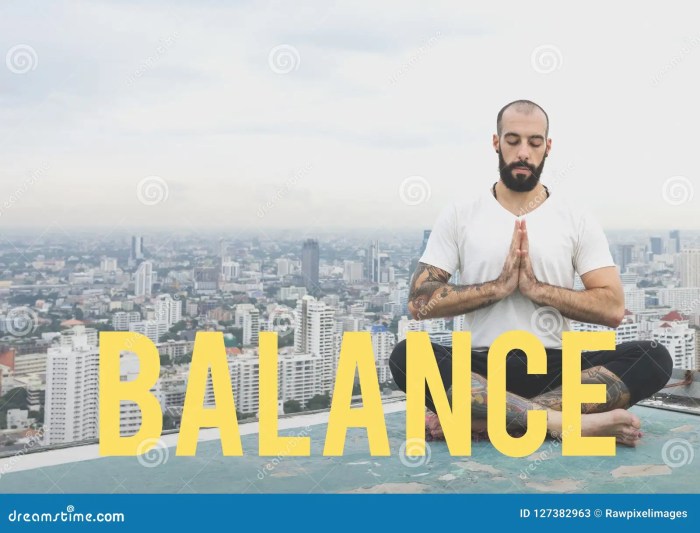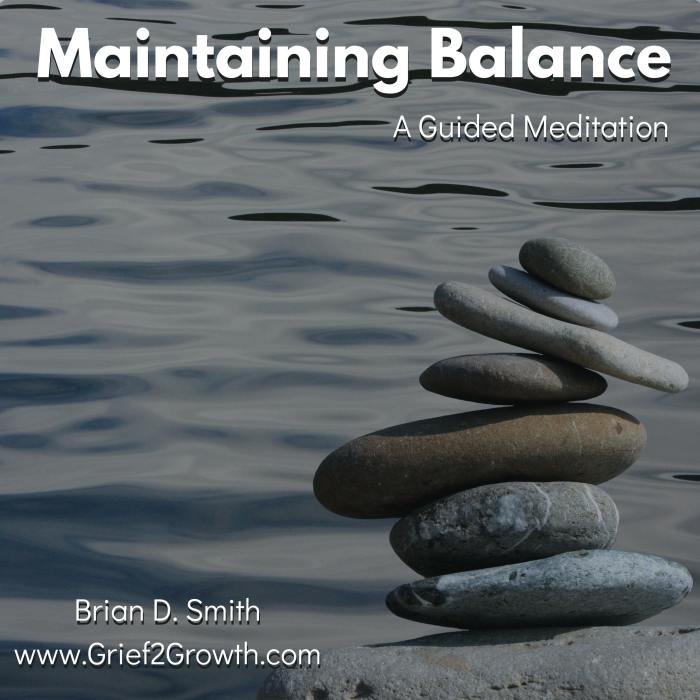Starting with How to Meditate for Restoring Balance in Your Daily Life, embark on a journey of inner peace and harmony as we delve into the transformative power of meditation.
Discover the key techniques and practices that can help you achieve equilibrium in your daily life, fostering a sense of well-being and serenity.
Introduction to Meditation for Restoring Balance: How To Meditate For Restoring Balance In Your Daily Life

Meditation is a practice that involves focusing the mind on a particular object, thought, or activity to achieve a state of mental clarity and emotional calmness. It has been practiced for centuries in various cultures and holds numerous benefits for overall well-being.Through regular meditation, individuals can experience reduced stress, anxiety, and depression levels. This practice promotes relaxation, improves concentration, and enhances self-awareness.
By cultivating mindfulness and inner peace, meditation can help restore balance in the hustle and bustle of daily life.
Benefits of Meditation for Restoring Balance
- Stress Reduction: Meditation can lower cortisol levels, the stress hormone, leading to a calmer and more relaxed state of mind.
- Emotional Regulation: By practicing meditation, individuals can better manage their emotions and respond to challenging situations with composure.
- Improved Focus: Meditation enhances concentration and attention span, allowing individuals to stay present and focused on tasks at hand.
- Enhanced Self-awareness: Through meditation, individuals can gain a deeper understanding of their thoughts, emotions, and behaviors, leading to greater self-awareness and personal growth.
Types of Meditation Techniques

Meditation is a powerful tool that can help restore balance in your daily life. There are various types of meditation techniques, each offering unique benefits and ways to achieve a balanced lifestyle.
Embark on a journey towards inner peace with the 7 Simple Steps to Start Meditating Today. Find a quiet space, sit comfortably, and focus on your breath. Let go of distractions and allow your mind to settle into stillness.
Mindfulness Meditation
Mindfulness meditation involves focusing your attention on the present moment without judgment. This practice helps increase self-awareness, reduce stress, and improve mental clarity. By being fully present in the moment, you can cultivate a sense of peace and balance in your life.
Experience emotional balance through meditation by following How to Meditate for Achieving Emotional Stability. Practice mindfulness and observe your thoughts without judgment. Cultivate compassion towards yourself and others.
Loving-Kindness Meditation
Loving-kindness meditation, also known as Metta meditation, involves sending love and compassion to yourself and others. This practice helps cultivate feelings of kindness, empathy, and connection with others. By fostering positive emotions, loving-kindness meditation can help create a more harmonious and balanced life.
Body Scan Meditation
Body scan meditation involves systematically focusing on each part of the body, from head to toe, and bringing awareness to any sensations or tensions present. This practice helps promote relaxation, reduce physical discomfort, and increase body awareness. By tuning into your body’s signals, you can address areas of tension and achieve a greater sense of balance and well-being.
Discover the path to true happiness through meditation techniques outlined in How to Meditate for Achieving True Happiness. Embrace gratitude, let go of negativity, and connect with your inner self to find lasting joy and contentment.
Creating a Meditation Space

Creating a dedicated meditation space in your home can greatly enhance your practice and help you restore balance in your daily life. This space should be peaceful, calming, and free from distractions to allow you to focus fully on your meditation practice.
Tips for Setting Up a Peaceful Meditation Space
- Choose a quiet area in your home where you won’t be disturbed.
- Clear the space of clutter and unnecessary items to create a sense of calm and openness.
- Consider using natural materials like wood, bamboo, or cotton for a soothing atmosphere.
- Add elements like plants, candles, or incense to enhance the ambiance and promote relaxation.
- Use soft lighting or natural light to create a gentle and peaceful atmosphere.
The Importance of a Calming Environment for Meditation
Creating a calming environment for meditation is essential to help you relax, focus, and connect with your inner self. A peaceful space can help you release stress, quiet your mind, and cultivate a sense of tranquility that will carry over into your daily life.
Ideas for Decorating the Space to Enhance the Meditation Experience, How to Meditate for Restoring Balance in Your Daily Life
- Choose soothing colors like blues, greens, or earth tones to create a sense of serenity.
- Add comfortable cushions or a meditation mat to create a cozy and inviting space.
- Include personal items like crystals, statues, or inspirational quotes that hold special meaning for you.
- Play soft music or nature sounds to create a calming background ambiance for your meditation practice.
- Consider incorporating elements of nature, such as a small indoor fountain or a window with a view of trees or flowers.
Incorporating Meditation into Daily Routine

Integrating meditation into your daily routine can greatly contribute to restoring balance in your life. By making it a consistent habit, you can experience the benefits of mindfulness and inner peace amidst a busy schedule.
Strategies for Making Meditation a Consistent Habit
Here are some strategies to help you establish a regular meditation practice:
- Set a specific time each day: Choose a time that works best for you, whether it’s in the morning before starting your day or in the evening before bed.
- Start with short sessions: Begin with just a few minutes of meditation and gradually increase the duration as you become more comfortable with the practice.
- Create reminders: Set alarms or notifications to prompt you to meditate at your chosen time each day.
- Find a meditation buddy: Partnering with a friend or family member can help you stay accountable and motivated in your meditation practice.
Best Times of Day to Practice Meditation for Restoring Balance
While the ideal time to meditate may vary depending on individual preferences, here are some common recommendations:
- Morning: Practicing meditation in the morning can help set a positive tone for the day ahead and increase focus and productivity.
- Evening: Meditating before bed can promote relaxation and improve sleep quality, aiding in stress relief and mental clarity.
- Midday break: Taking a short meditation break during the day can help reset your mind and reduce stress levels, enhancing overall well-being.
Mindful Breathing Techniques

Mindful breathing plays a crucial role in restoring balance in our daily lives by helping us stay present, calm, and focused. By practicing mindful breathing, we can alleviate stress, reduce anxiety, and enhance our overall well-being.
Deep Breathing
Deep breathing involves taking slow, deep breaths to fully expand your lungs and diaphragm. Here are the steps for deep breathing:
- Sit or lie down in a comfortable position.
- Place one hand on your chest and the other on your abdomen.
- Inhale deeply through your nose, allowing your abdomen to rise while keeping your chest still.
- Exhale slowly through your mouth, emptying your lungs completely.
- Repeat this process for several minutes, focusing on the sensation of your breath.
Diaphragmatic Breathing
Diaphragmatic breathing, also known as belly breathing, involves engaging your diaphragm to take deep breaths. Here’s how you can practice diaphragmatic breathing:
- Find a quiet place to sit or lie down comfortably.
- Place one hand on your chest and the other on your abdomen.
- Inhale deeply through your nose, allowing your abdomen to expand while keeping your chest still.
- Exhale slowly through your mouth, letting your abdomen fall as you release the breath.
- Continue this breathing pattern, focusing on the rise and fall of your abdomen with each breath.
Significance in Managing Stress and Anxiety
Mindful breathing can be a powerful tool in managing stress and anxiety by calming the mind and body. When we focus on our breath, we anchor ourselves in the present moment, reducing racing thoughts and promoting relaxation. Regular practice of mindful breathing techniques can help us build resilience against stressors and cultivate a sense of inner peace.
As we conclude our exploration of meditation for restoring balance, remember that the path to harmony lies within your own breath and presence. Embrace the stillness and find balance in every moment.